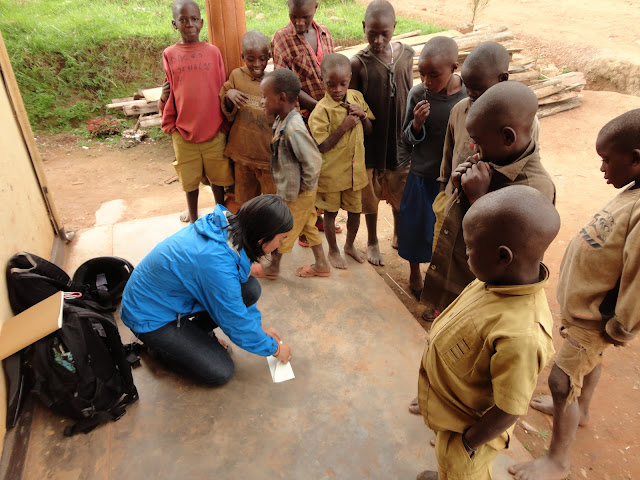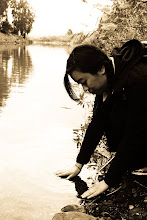Street signs (like the one above) have been popping up all over Kigali over the past week and a half. In case you didn't know, street signs are a completely foreign concept here. Sure, there are signs that indicate the general location of different offices or restaurants, but the signs that we rely on so heavily in America simply don't exist here. I'm still trying to figure out what all the letters and numbers mean (K for Kigali, N for...?), but I think eventually I'll understand it. In the meantime, they mean absolutely nothing to me!
I myself am really hoping that these signs will make giving and following directions easier because, as you can imagine, giving directions in a country with no street signs is quite a challenge. Recently, I was invited to a friend's going away party. I had never been to her house, even though it a 10 minute walk from where I live. You'll see after reading her "directions" how creative you need to get when trying to direct people to new places. However, as complicated as it looks, her directions were quite useful. More useful than these street signs, at least! Do the directions to her house make any sense to you?
I myself am really hoping that these signs will make giving and following directions easier because, as you can imagine, giving directions in a country with no street signs is quite a challenge. Recently, I was invited to a friend's going away party. I had never been to her house, even though it a 10 minute walk from where I live. You'll see after reading her "directions" how creative you need to get when trying to direct people to new places. However, as complicated as it looks, her directions were quite useful. More useful than these street signs, at least! Do the directions to her house make any sense to you?
"To get to our house, drive on the main Nyamirambo road, pass through Biryogo (the busy colorful Mosque area where the road splits and comes back together), continue up the hill, pass the Kobil station on the left, pass the Merez Station/Spectra Bar on the right, and then you will go over two speed bumps. Just after the second speed bump, turn left at the corner with the big SP sign and Inyange milk billboard. (Moto drivers will know this corner as "ERP" in the French pronunciation, "ay air pay.") You will now be on a semi-dirt road. Continue on this road for less than a minute and take the SECOND road on the right. It is uphill and very bumpy. After this turn, take the road that immediately forks left. Continue until the end of this road, for about a minute, when you will come to a big antenna on your right and you will be forced to turn left and downhill. Our house is the second on the right and is the biggest and brightest house in the area. It has a bluish-green gate."







